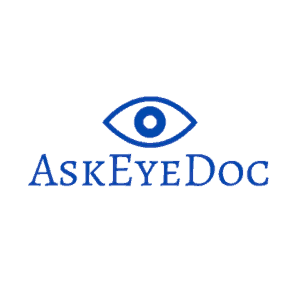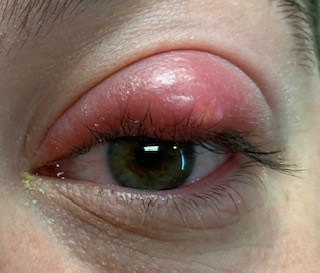Written by: Dr. Stephanie Mulick, O.D.
What causes a stye?
A stye, also known as a Chalazion is caused by a blocked meibomian gland. We have about 50 meibomian glands on our upper lids and about 30 on our lower lids. These glands produce tears every time we blink our eyes to keep our eyes moist. The type of tears that are produced by the meibomian glands are different than reflex tears or the type of tear that is produced when you cry. Reflex tears are produced by the lacrimal gland which has nothing to do with a stye.
When the oil in the meibomian gland thickens it gets backed up and can cause inflammation, otherwise known as a stye or Chalazion.
It causes a red and inflamed bump at the base of the lid margin near the eyelashes on either the upper or lower eyelid.
Review my post on dry eye that explains Meibomian Gland Dysfunction.
Can you get rid of a stye overnight?
Usually, it takes a few days to weeks to get rid of a stye.
Styes respond well to heat and massage. Apply heat to the affected area for 10-20 minutes. Make sure to keep the heat on for a minimum of 10 minutes to aid in melting the oil that is blocking the gland. It is also important to keep the area clean. Using baby shampoo or over-the-counter eyelid wipes, such as Ocusoft or Systane Lid wipes, work well for cleaning the eyelids.
Dr. Ramin Tayani, MD, a board-certified Ophthalmologist and fellowship-trained orbital-facial plastic surgeon states that if “a chalazion is long-standing and fails to respond to warm compresses and digital massage or if the patient desires immediate results, management would include incision and drainage.”
How to treat a stye
- Hot compress: either with the use of a dry eye mask (found on amazon) or a bowl of hot water with a lid and two washcloths. Ensure to maintain heat by switching between the washcloths. Make sure to have the heat on your closed eyelids for 10-20 minutes and massage the eyelids while applying heat to the affected eyelids.
- Lid scrubs: baby shampoo or over-the-counter eyelid scrubs work great for keeping the eyelids clean and free of oil.
- Avoid oily products around the eye area, stick with oil-free products when it comes to the eyes.
- Avoid waterproof makeup as it is more prone to clogging the meibomian glands and does not dissolve well with hot compresses.
- Sometimes it is necessary to use prescription antibiotic/steroid drops and ointments as directed by your Eye doctor.
- Surgical incision or excision: Large chalazion which does not respond well to other treatments can be surgically opened and drained. It is important to continue hot compresses prior to the surgical procedure and following the procedure to ensure that the contents of the stye drain thoroughly.
Are styes caused by stress?
According to Dr. Troy Bedinghaus, O.D. during times of stress, our bodies excrete certain chemicals and hormones that may play a role in developing styes.
People with chronic inflammatory conditions such as Rosacea, chronic blepharitis or Meibomian gland dysfunction are more prone to developing chalazia or styes.
Treatment for these conditions can often help reduce the recurrence of styes/chalazion.
Are styes contagious?
Although usually caused by Staphylococcus bacteria, styes are not contagious. If you do get discharge from the bump make sure to clean the area and wash your hands.
Do Not Pop a Stye
Although tempting to pop a stye like a pimple this could lead to more serious infection. Allow the stye to open up itself by using hot compress and massage.
When to see an eye doctor
If your stye is persistent or recurrent, it would be recommended to see an Eye Doctor. Sometimes adding medicated ointment can help reduce the inflammation; however, it can be necessary to have the stye drained by an Oculoplastic surgeon. The procedure itself is quick but will require more hot compresses afterwards as well as medicated eye drops and ointment.
Conclusion:
A stye although annoying and unattractive is not a serious condition. With early treatment the prognosis of recovery is high. When a stye becomes recurrent it could indicate an underlying chronic inflammatory condition.



Right on my man!